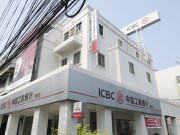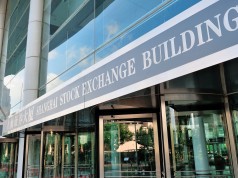We often hear of Fed Rate and European Central Bank rates. We may also be familiar with deposit rates and housing loans rates.
But we seldom hear of interbank rates. The interbank rate is one of the most important interest rates in the global financial system. It is the rate that keeps the finanical system functioning properly everyday.
What is the Interbank Rate?
The interbank rate is the interest rate at which a bank lends to another.
For example:
If Citibank needs $500 Million for one day, they would look for a bank that has cash (in excess) to borrow for one day, at the lowest loan rate possible. The rate is known as the interbank rate.
Published interbank rates such as LIBOR, EURIBOR and SIBOR are often polled and trimmed averaged rates. This means the rates are surveyed with particpating banks and extreme interbank rates are removed. Thereafter, an average is then calculated to form the published interbank rate.
Why is the interbank rate important?
The global financial system functions properly with interbank rates. Since the rate is the interest rate at which one bank lends to another, any disruption or unusual interest rates movements provide early warning signs or presents great business opportunities for banks to take advantage of the pricing.
For example, the 1997 Asian financial crisis resulted in interbank overnight rates shooting up to 60% p.a. interest rate. In 2008, the aftermath of Lehman Brothers collapse, the interbank market froze. This means many banks refused to lend to one another, fearing the bank they lend to may collapse.
How does the Interbank Rate play a part in the global financial system?
Although the Central Banks set the monetary policies and interest rates for the country, the banks are the key function of the global economy and financial markets. The banks decides the risks to take in lending to another bank. At the same time, they use the interbank rate to determine a higher lending rate to lend to their corporate and individual customers. The difference between the lending rate and the interbank rate is commonly known as the spread. The spread is the margin at which banks earn, in taking the risks of the loan.
For example:
The interbank rate is at 2%. If DBS Bank has a sudden demand for loans at 3% for the 1 Month, DBS Bank could borrow from the interbank market at 2% and profit from the difference of 1% for the 1 Month period.
Which are the common interbank rates in the world?
LIBOR. The London Interbank Offered Rate is the most widely used reference rate in the global financial markets.
Other interbank rates include EURIBOR, SIBOR, HIBOR and TIBOR.
Related Articles
- What is the Interbank Rate?
- 5 Important Interbank Rates to Watch
- 2018 Most Influential Central Banks
- 8 Important Central Banks to Watch
Sign Up / Register
Caproasia Users
- Manage $20 million to $3 billion of assets
- Invest $3 million to $300 million
- Advise institutions, billionaires, UHNWs & HNWs
Caproasia Platforms | 11,000 Investors & Advisors
- Caproasia.com
- Caproasia Access
- Caproasia Events
- The Financial Centre | Find Services
- Membership
- Family Office Circle
- Professional Investor Circle
- Investor Relations Network
Monthly Roundtable & Networking
Family Office Programs
The 2025 Investment Day
- March - Hong Kong
- March - Singapore
- July - Hong Kong
- July - Singapore
- Sept- Hong Kong
- Sept - Singapore
- Oct- Hong Kong
- Nov - Singapore
- Visit: The Investment Day | Register: Click here
Caproasia Summits
- The Institutional Investor Summit
- The Investment / Alternatives Summit
- The Private Wealth Summit
- The Family Office Summit
- The CEO & Entrepreneur Summit
- The Capital Markets Summit
- The ESG / Sustainable Investment Summit































